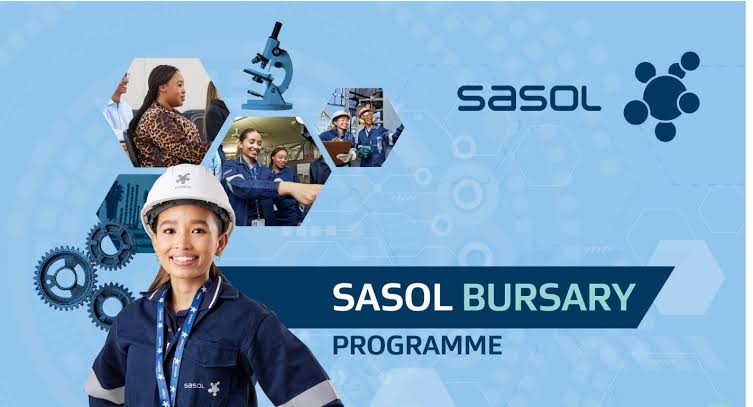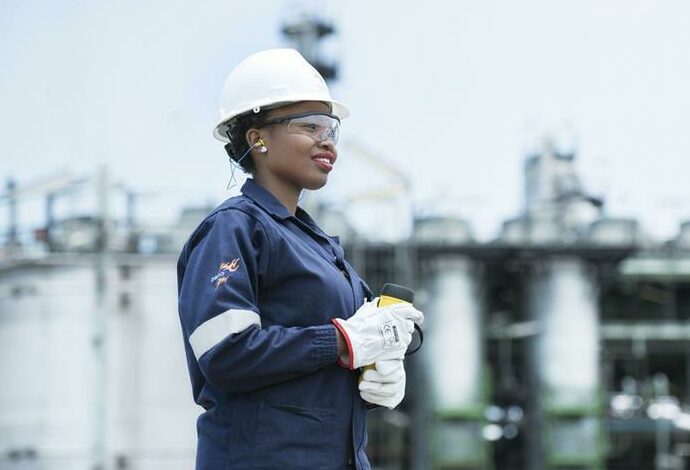Sasol Bursary 2026 – Funding for Great Engineers in South Africa’s Green Hydrogen Projects

Sasol Bursary 2026 South Africa stands on the brink of one of its most important energy transitions. As the world races to reduce carbon emissions and embrace sustainable alternatives, green hydrogen is rapidly rising as a cornerstone of the clean energy economy. In this context, Sasol Bursary 2026 tied to its Green Hydrogen Project offers a unique opportunity for South African youth to gain the skills, education, and experience needed to help drive this transformation.
What is Green Hydrogen (and Why It Matters)
Green hydrogen is hydrogen produced through electrolysis powered by renewable energy, such as solar or wind, rather than by fossil fuels. The result: zero direct carbon emissions during production. It has enormous potential in decarbonising hard-to-abate sectors such as heavy industry (steel, chemicals), transport (especially heavy haul and aviation), and for use as feedstock in various chemical processes.
For countries endowed with renewable energy potential—like South Africa—green hydrogen is not just an environmental imperative but also an economic opportunity. It can generate jobs, support export markets, and help achieve national and international climate goals.
Sasol’s Green Hydrogen Ambitions
Sasol is already active in green hydrogen across multiple fronts. Some highlights include:
- The Sasolburg pilot project in the Free State, involving a 3 MW solar photovoltaic plant to power electrolysers.
- The planned 69 MW Msenge Emoyeni wind farm in the Eastern Cape, which once operational will further support consistent green hydrogen production.
- The Boegoebaai feasibility study in the Northern Cape, which aims to establish a green hydrogen and ammonia export hub.
- Sasol’s Green Hydrogen & Power Systems Modelling research in partnership with the National Research Foundation, aimed at expanding academic and technical skills in energy transition areas.
These initiatives are part of Sasol’s broader energy-transition strategy, which also includes procuring significant renewable electricity capacity and moving away from grey hydrogen (produced from fossil fuels).
What is the Sasol Bursary 2026: Green Hydrogen Project?
Sasol Bursary 2026 is specifically tied to the Green Hydrogen Project. Key features include:
- Who is eligible: South African citizens by birth, with academic excellence, particularly in STEM (Science, Technology, Engineering, Mathematics) fields. Priority is given to students from fence-line communities, children of Sasol employees, or Khanyisa/Inzalo shareholders.
- What is covered: The bursary is all-inclusive for full-time undergraduate degrees at recognised public universities in South Africa. It generally covers full tuition, accommodation, meals, a laptop/calculator allowance, and a stipend.
- Fields of study: Primarily STEM disciplines such as Engineering, Chemical Sciences, Data Science, Technology, Construction, and Manufacturing. Supporting fields like Financial and Accounting Sciences may also be considered.
- Postgraduate availability: For 2026, Sasol will not offer postgraduate Sasol Bursary 2026 under this Green Hydrogen scheme.
- Location focus: Priority is given to Northern Cape students, reflecting the project’s focus on Namaqua and Richtersveld districts, where Sasol is exploring green hydrogen developments.
Why Sasol Bursary 2026 is Important
1. Builds Skills for a Green Economy
The scale and nature of Sasol’s green hydrogen initiatives require a workforce with specialised technical skills: engineering, data science, chemical sciences, power systems modelling, and more. By supporting students now, the Sasol Bursary 2026 ensures South Africa has the human capital to implement, operate, and scale hydrogen infrastructure.

2. Socio-economic Upliftment
Sasol’s commitment to supporting students from fence-line communities and financially constrained households means this programme has strong potential for equitable development. Bursaries help reduce barriers such as tuition, accommodation costs, and access to devices.
3. Localisation & Export Potential
Projects like Boegoebaai aim not just to serve local demand but to become export hubs for green hydrogen or green ammonia. Having well-trained graduates in relevant disciplines will help South Africa leverage these opportunities.
4. Aligns with Government & Global Goals
South Africa has signed on to international climate agreements; green hydrogen is central in its energy transition roadmap. By implementing projects and developing skills in this sector, Sasol’s bursary supports national policy goals.
Eligibility & Application: What You Need to Know
If you’re considering applying, here are key things to keep in mind:
| Criteria | Details |
|---|---|
| Citizenship | Must be a South African citizen by birth. |
| Academic performance | High performance in STEM subjects; strong overall results. For later years, a minimum average in prior modules may be required. |
| Household income | There is usually a cap on combined household income, ensuring the bursary goes to those most in need. |
| Program of study | Must be a full-time undergraduate degree in an approved field (STEM and related). |
| Other requirements | Acceptance or provisional acceptance at a South African public university or university of technology, academic records, and supporting documents. |
Application deadlines are strict and usually open well in advance. Interested students should monitor Sasol’s official bursaries platform www.Sasolbursaries.com for Sasol Bursary 2026 announcements.
Challenges & Considerations
While the bursary and project offer great promise, there are some challenges to be aware of:
- Scaling Renewable Energy: Green hydrogen production requires large amounts of renewable electricity. Projects like Sasolburg’s pilot depend on additional wind or solar farms, which need investment, regulatory approval, and long-term planning.
- Infrastructure: Transporting hydrogen or ammonia, exporting, or using it for mobility requires infrastructure—pipelines, ports, refuelling stations—that is still under-developed in South Africa.
- Cost: Electrolyser technology, renewable energy storage, and enabling systems are still relatively expensive. Reducing costs is necessary for competitiveness.
- Environmental and Social Impact: Projects must manage water use, local ecosystems, and community effects, while ensuring that benefits reach local populations.
Impact & Long-Term Vision
If implemented effectively, the Sasol Green Hydrogen Projects, supported by the Sasol Bursary 2026 , could have transformative impacts:
- Job Creation: Thousands of direct jobs during construction and operation phases, plus many more indirect roles in supply chains, research, and maintenance. The Boegoebaai hub alone is projected to create up to 6,000 direct jobs.
- Exports & Foreign Revenue: South Africa could become a hydrogen exporter, particularly of green ammonia for shipping or industrial feedstock.
- Decarbonisation of Hard-to-Abate Sectors: Industries that are traditionally high emitters—mining, aviation, heavy transport, steel—can potentially switch to green hydrogen or its derivatives, helping South Africa meet climate targets.
- Academic & Research Growth: The partnership between Sasol Bursary 2026 and institutions like the National Research Foundation is building research chairs, postdoctoral fellowships, and innovation in green energy technologies.
Tips for Applicants
To improve your chances of success:
- Focus on STEM excellence – excel in maths, physical science, chemistry, or related subjects.
- Get involved in related extracurriculars – science fairs, tech clubs, or environmental projects can strengthen your application.
- Prepare your documentation – ensure transcripts, proof of income, and acceptance letters are ready.
- Show your passion for green energy – explain in essays or interviews how you want to contribute to South Africa’s energy transition.
- Stay updated – Sasol Bursary 2026 details and deadlines may change, so monitor Sasol’s official platforms regularly.
Sasol Bursary 2026 Conclusion
The Sasol Bursary 2026 tied to the Green Hydrogen Project is more than just financial support: it is a ladder into a future where clean energy, sustainability, and innovation are central. For young South Africans interested in STEM, environmental science, or renewable energy disciplines, this presents a rare chance to contribute meaningfully to one of the most consequential transitions of our time.
If you believe you are suited for this path, prepare early, aim high, and apply with confidence. Your education could be the launchpad for both your own success and South Africa’s clean energy future.



